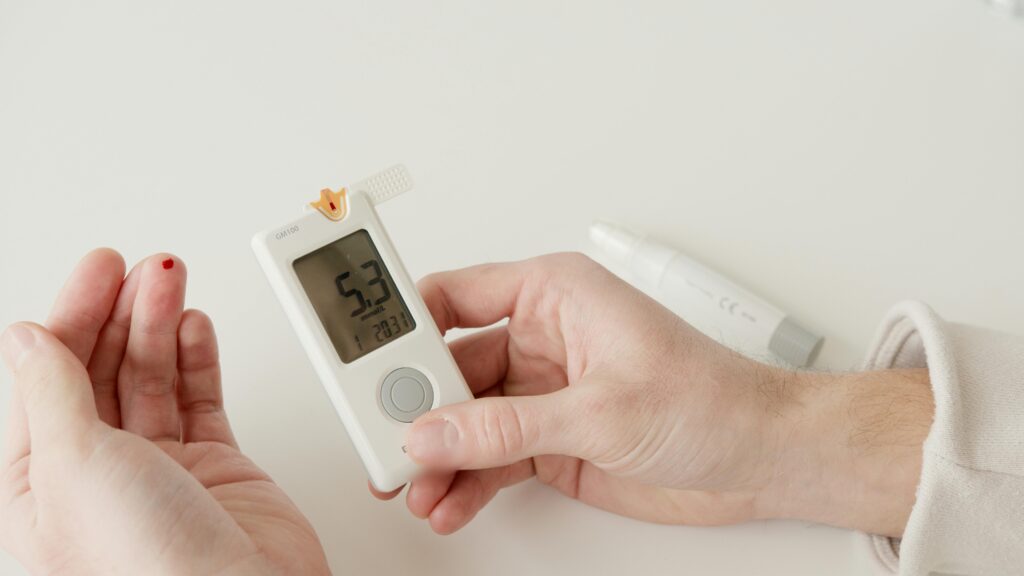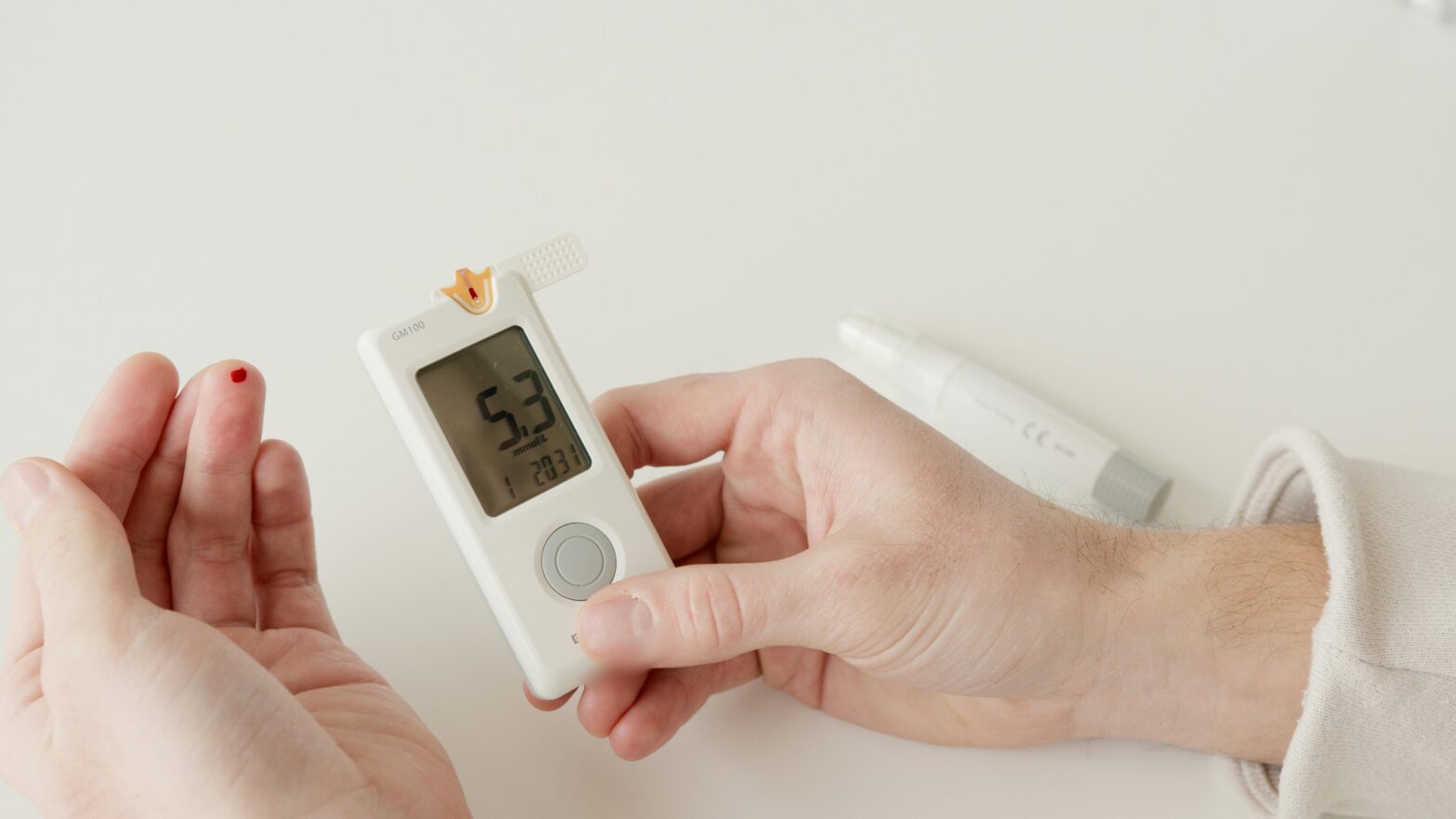7 Popular Diabetes Myths Debunked

Diabetes is a prevalent disease affecting over 38.4 million people aged 18 and above. Because of how widespread it is, there are many myths surrounding the condition, and this kind of gross misinformation can be dangerous.
In this article, we consider 7 popular diabetes myths and place them side by side with facts.
Myth 1: Eating too much sugar causes diabetes
Excessive sugar intake can result in significant weight gain and is a risk factor for type 2 diabetes. However, sugar is not a direct cause of diabetes. Type 2 diabetes develops as a result of genetic predisposition, insulin resistance, and lifestyle choices. Type 1 diabetes is caused by an autoimmune condition where the body attacks the insulin-producing cells in the pancreas.
Research has shown that a diet rich in processed foods and obesity increases the risk of developing type 2 diabetes. Imbibing a moderate and balanced diet is one of the major ways of preventing diabetes and maintaining good health. While you can enjoy sweets sparingly, focusing on a diet rich in fiber, proteins, and healthy fats can help keep your blood sugar stable.
Myth 2: Insulin is for people with severe diabetes
It is generally believed that insulin is only necessary for people who suffer acute cases of diabetes. However, this is not true, as insulin is a necessary treatment for type 1 diabetes and may be needed for patients with type 2 diabetes when other treatments fail.
Type 1 diabetes happens when the body stops producing insulin on its own, and insulin injections become necessary to stabilize blood sugar. In type 2 diabetes, the body becomes insulin-resistant, and the pancreas may not produce enough of it. Lifestyle changes and oral medications can help manage type 2 diabetes, but insulin may be required when blood sugar levels are still peaking.
Taking insulin is not a sign that your diabetes is worsening diabetes but rather a life-saving treatment. If your doctor recommends insulin, understand that it is to keep your blood sugar levels at a healthy range.
Myth 3: People with diabetes should eat special food
Health and wellness companies come up with special formulations for diabetic patients, but these ‘diabetic-friendly’ foods or products are typically not the best choice for handling diabetes. Some of those products contain processed ingredients that may cause other side effects in the long run.
Many diabetic foods contain unhealthy fats, which can elevate blood sugar levels. In the same vein, sugar alternatives can increase cravings for sweet foods. The best way to approach diabetic management is through a healthy and balanced diet filled with whole and nutrient-dense foods. A well-balanced diet includes healthy fats from fruits like avocados, fibrous foods like oats, and lean proteins from salmon.
According to a 2015 study, a high-fat (low in saturated fat), low-carb diet improves glucose stability and reduces the need for type 2 diabetes medication. A Mediterranean diet was also shown to lead to better blood sugar control, heart health, and weight loss.
Myth 4: Natural remedies can cure diabetes
There is no known cure for diabetes. However, lifestyle changes and medications can have a significant impact on the symptoms. While natural remedies like cinnamon can have minor effects on sugar levels, they cannot completely substitute medical treatment.
Researchers have examined some supposed natural remedies, but they have not been proven to cure diabetes. Relying on natural remedies can be dangerous, as they can prolong symptoms and lead to uncontrolled blood sugar levels. It is advisable to consult a healthcare provider before trying supplements and other treatments. The best way to manage diabetes is to get proper medical care combined with a healthy lifestyle.
Myth 5: Only older people get diabetes
Diabetes can affect people of any age and is not limited to older adults. Type 1 diabetes is commonly seen in children, while type 2 diabetes is more prevalent in adults, but in recent times, it has been seen in younger adults due to poor diet and lack of physical activity.
With more children consuming more sugary and sweetened beverages, they are at greater risk of suffering from obesity and developing insulin resistance, which can lead to type 2 diabetes. Another form of diabetes called gestational diabetes can develop during pregnancy and go away after childbirth, but it raises the risk of developing type 2 diabetes later.
A family history of gestational diabetes or any other type of diabetes increases the risk of developing diabetes. Implementing lifestyle changes and maintaining a healthy diet is the best way to prevent diabetes.
Myth 6: Exercise does not help in managing diabetes
Another common myth about diabetes is that exercise isn’t effective in managing it. While maintaining a healthy diet is important, exercise is highly effective for diabetic patients. It helps regulate sugar levels, increase insulin sensitivity, and impact weight loss. Cardio activities like walking or cycling can boost glucose metabolism and prevent diabetic complications like heart disease.
Patients who require insulin injections need consistent physical activity, which optimizes insulin use and overall health. Exercise and good lifestyle choices can reinforce the body’s ability to manage blood sugar effectively.
Myth 7: You can know if you have diabetes
Many people walk around with diabetes without realizing it. According to the American Diabetes Association, out of 29.1 million Americans thought to have diabetes, an estimated 8.1 million don’t know they do. This is because many people convince themselves that noticeable symptoms are less serious than they are.
Symptoms like frequent urination are often related to urinary tract infections, and unusual fatigue is connected to a common cold. It is important to present the collection of your symptoms to your doctor, especially when you have a history of diabetes in your family.
FAQs
What should diabetics drink first thing in the morning?
Water is the best drink for everyone, but especially for people with diabetes. It helps to eliminate carbohydrates and calories and provides hydration for the body.
What food is the number one enemy of diabetes?
Sweetened drinks like sodas, iced teas, and punches increase blood sugar and can result in worsening symptoms.
What is the one fruit that lowers blood sugar?
Berries provide fiber and antioxidants, which lower blood sugar and inflammation. A study found that strawberries reduced diabetes complications like kidney disease and nerve damage.
Wrapping Up
Diabetes is a chronic disease that affects your body system, and it is rampant such that everyone possibly knows someone with the disease. Due to its prevalence, myths, and opinions are widespread. Understanding the truth surrounding diabetes and how best to manage it can be life-saving.
It is crucial to spread awareness about these myths as they can mislead those oblivious or new to diabetic concerns.
Sell Extra Diabetic Test Strips For Cash!
Got extra diabetic test strips you don’t need anymore? You can sell them for cash to get the supplies you need! If you recently switched to a new glucose meter, you can sell your old test strips and get them to people who need them the most while making a little extra money on the side.
We do local pickups if you are in the Tampa Bay area. Just call or text us at (727) 204-0478, and we will send you a quote immediately, pick up the strips, and pay you cash upfront!
If you are not in Tampa, we also accept nationwide shipping! Call us at (877)-564-2154 and ship your unused diabetic test strips and diabetic supplies to us from anywhere in the United States. Visit our Ship Your Strips page to begin the shipping process. You will receive payment within 24 hours upon receipt of the test strips, and it is processed via PayPal, CashApp, Zelle, or check.

